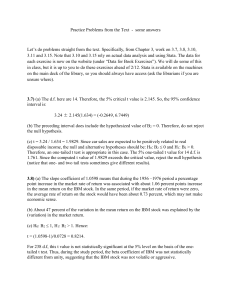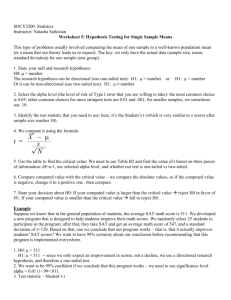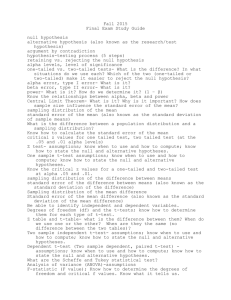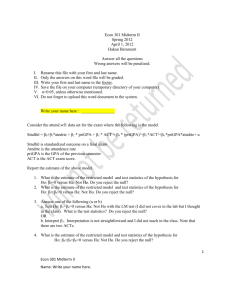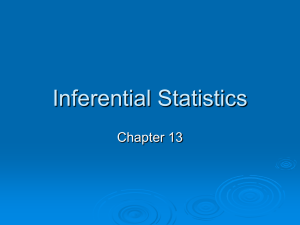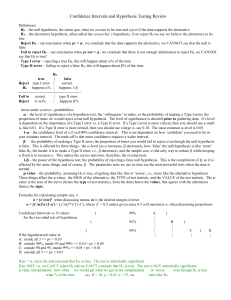t-test problems
advertisement
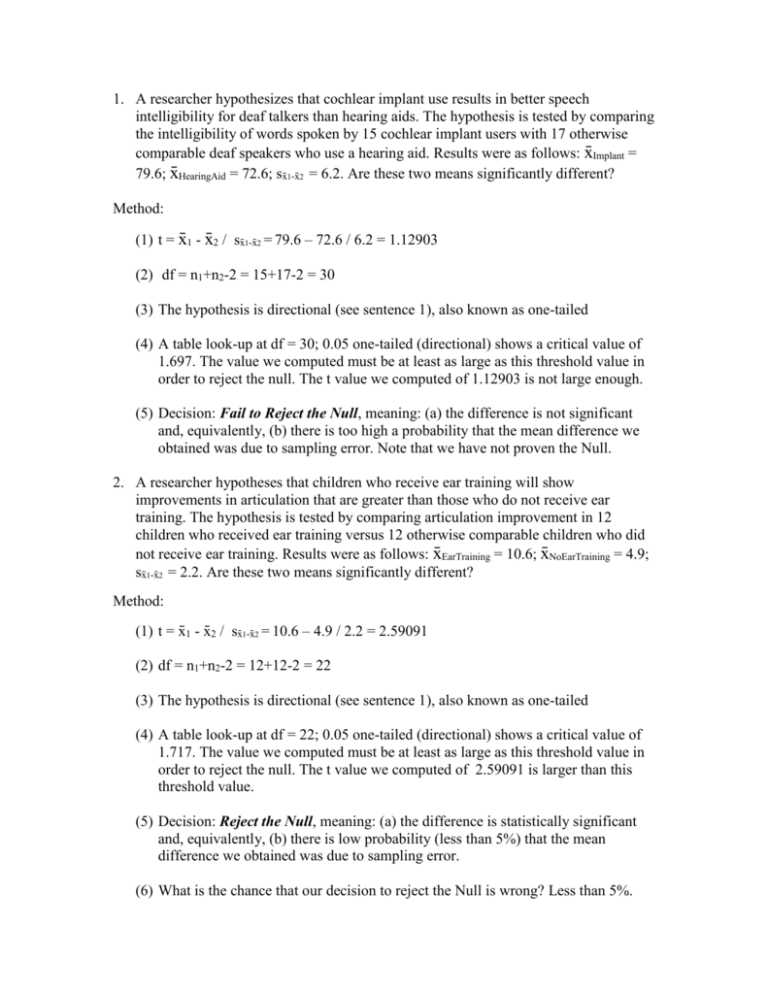
1. A researcher hypothesizes that cochlear implant use results in better speech intelligibility for deaf talkers than hearing aids. The hypothesis is tested by comparing the intelligibility of words spoken by 15 cochlear implant users with 17 otherwise comparable deaf speakers who use a hearing aid. Results were as follows: xˉ Implant = 79.6; xˉ HearingAid = 72.6; sxˉ 1-xˉ 2 = 6.2. Are these two means significantly different? Method: (1) t = xˉ 1-xˉ 2/ sxˉ 1-xˉ 2 = 79.6 – 72.6 / 6.2 = 1.12903 (2) df = n1+n2-2 = 15+17-2 = 30 (3) The hypothesis is directional (see sentence 1), also known as one-tailed (4) A table look-up at df = 30; 0.05 one-tailed (directional) shows a critical value of 1.697. The value we computed must be at least as large as this threshold value in order to reject the null. The t value we computed of 1.12903 is not large enough. (5) Decision: Fail to Reject the Null, meaning: (a) the difference is not significant and, equivalently, (b) there is too high a probability that the mean difference we obtained was due to sampling error. Note that we have not proven the Null. 2. A researcher hypotheses that children who receive ear training will show improvements in articulation that are greater than those who do not receive ear training. The hypothesis is tested by comparing articulation improvement in 12 children who received ear training versus 12 otherwise comparable children who did not receive ear training. Results were as follows: xˉ EarTraining = 10.6; xˉ NoEarTraining = 4.9; sxˉ 1-xˉ 2 = 2.2. Are these two means significantly different? Method: (1) t = xˉ 1-xˉ 2/ sxˉ 1-xˉ 2 = 10.6 – 4.9 / 2.2 = 2.59091 (2) df = n1+n2-2 = 12+12-2 = 22 (3) The hypothesis is directional (see sentence 1), also known as one-tailed (4) A table look-up at df = 22; 0.05 one-tailed (directional) shows a critical value of 1.717. The value we computed must be at least as large as this threshold value in order to reject the null. The t value we computed of 2.59091 is larger than this threshold value. (5) Decision: Reject the Null, meaning: (a) the difference is statistically significant and, equivalently, (b) there is low probability (less than 5%) that the mean difference we obtained was due to sampling error. (6) What is the chance that our decision to reject the Null is wrong? Less than 5%.
